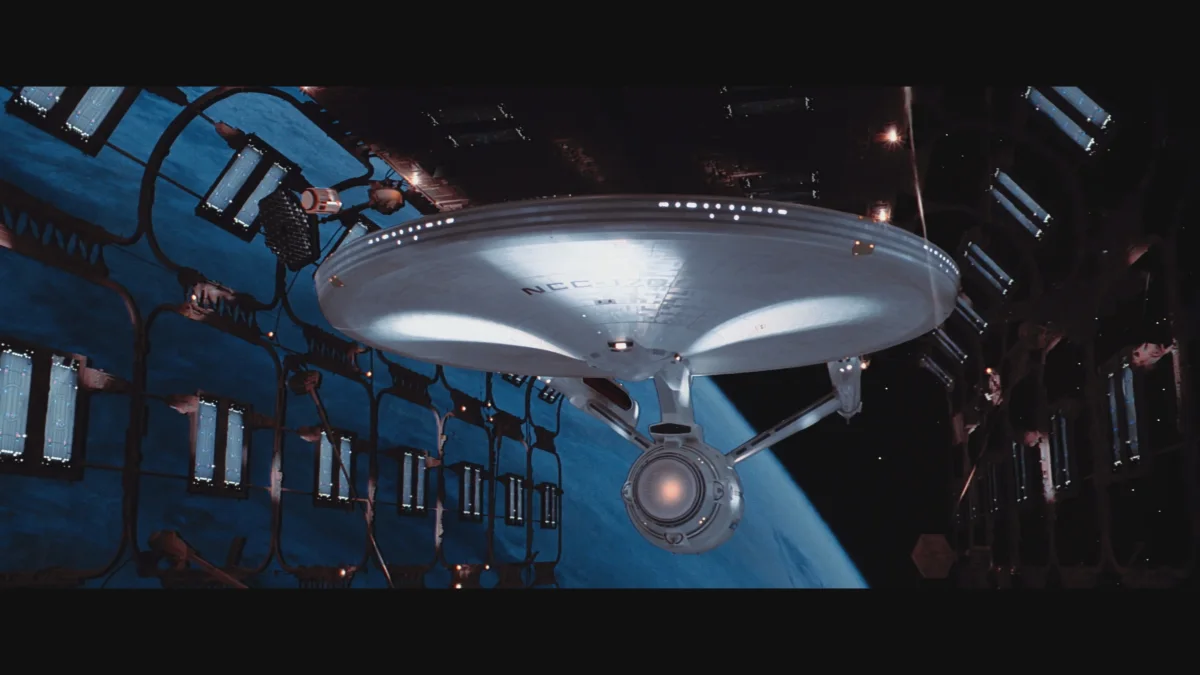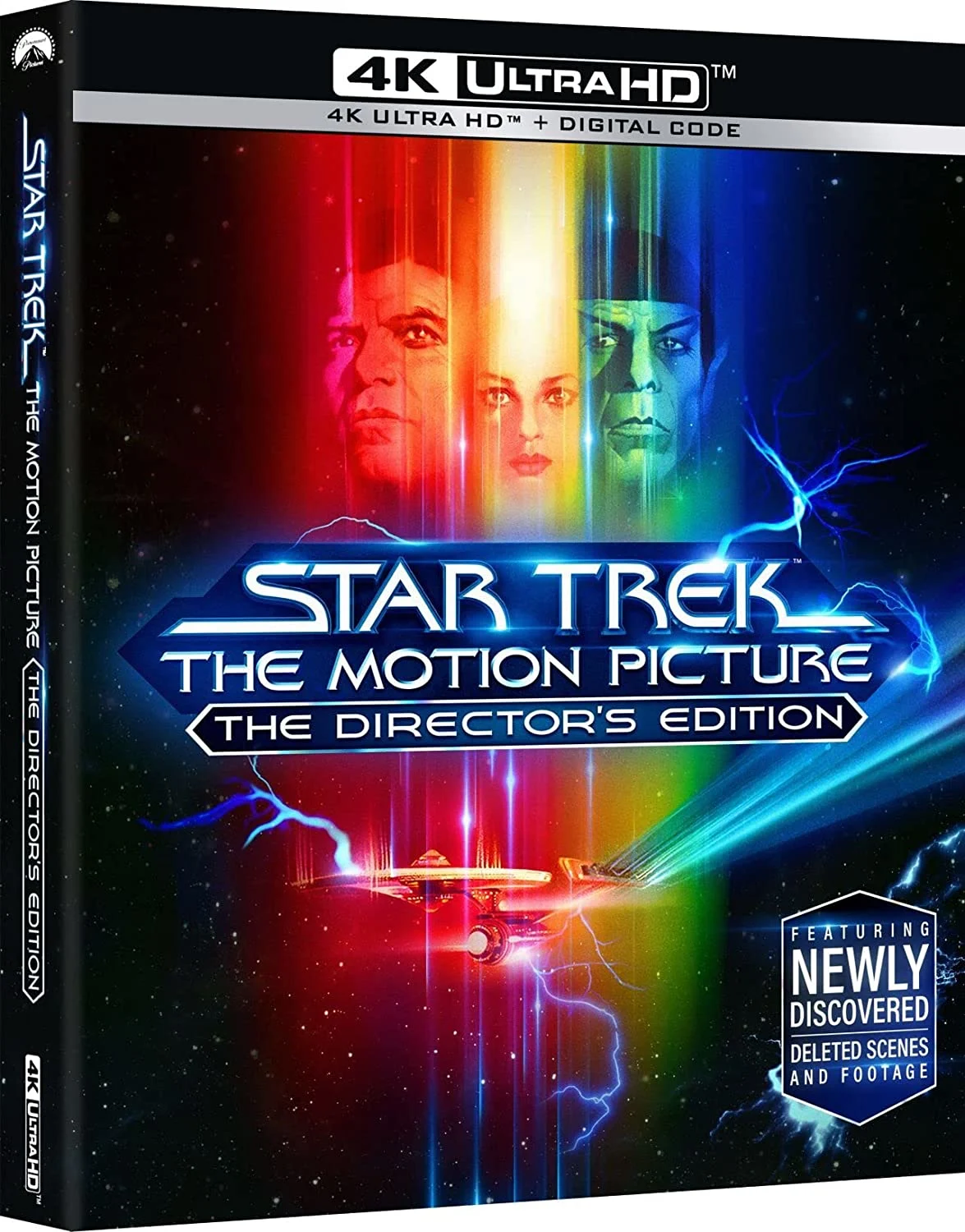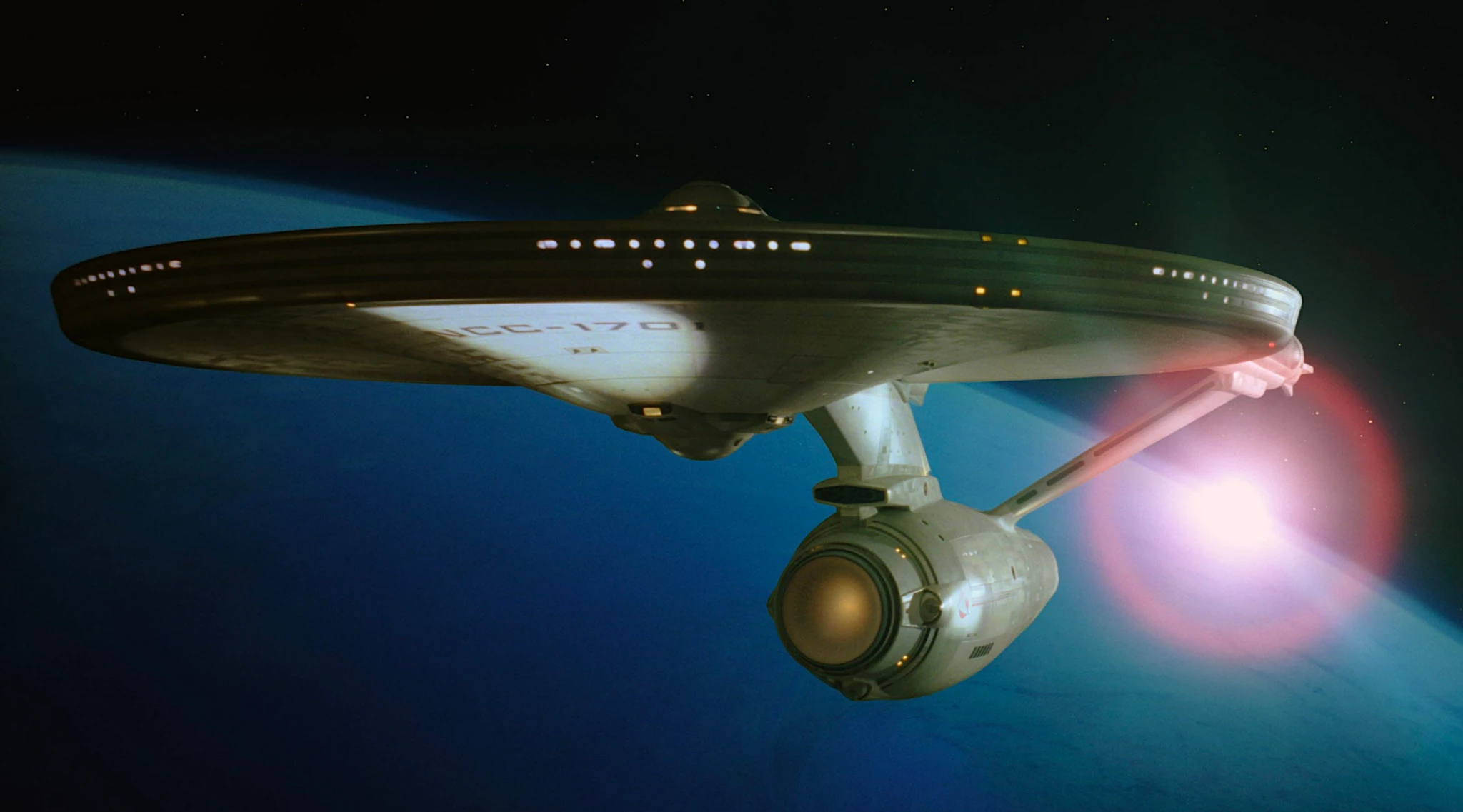After more than four decades, half a dozen sequels, and multiple franchise reboots, the original Star Trek movie — 1979's Star Trek: The Motion Picture — has finally been completed the way its director intended.
In 1978, four-time Oscar-winning filmmaker Robert Wise was tasked with adapting Star Trek for the big screen, a departure from films like 1961's West Side Story and 1965's The Sound of Music that made him famous. Star Trek: The Motion Picture was a critical and commercial success, but Wise never considered it completed. It would take advances in technology, a dedicated team of filmmakers, and a green light from Paramount to finally finish one of the most ambitious restorations in recent memory.
For producer David C. Fein, one of the filmmakers responsible for realizing Wise's vision, the 4K UHD Blu-Ray rerelease is not just a passion project, but a personal responsibility.
"I would never call this a restoration," he explains to A. Frame. "It's a completion of the film. A restoration implies you were taking something that was there previously and restoring it to its original form. This [film] never had a finished form until now. I don't think there’s ever been another film that took 43 years to finish."
Launched in 1966, Gene Roddenberry's Star Trek has more than lived up to its promise to "boldly go where no one has gone before," with forward-thinking storytelling and a diverse cast of characters. Star Trek: The Motion Picture featured the original cast of the TV series, including William Shatner as Captain James T. Kirk and Leonard Nimoy as Mr. Spock; however, the movie's production was troubled from the very beginning.
Harold Livingston's screenplay was continuously re-written throughout production, and by the time principal photography was completed in March 1979, fewer than 20 pages from the original 150-page screenplay remained. In order to make the film's December 7 release date, much of the visual effects were left either incomplete or out of the movie entirely. The final reel of film, still wet from development, was put in a container, and Wise personally transported it to Washington, D.C. for the film's premiere.
Despite the success that followed the release, including three Oscar nominations, Wise never considered the film finished. "It was the one that got away," Fein says. "It hurt."
In 1983, Paramount released an extended cut of the film for TV, adding roughly 13 minutes of additional footage back into the movie. But it wasn't until 1999, at the height of the DVD home entertainment market, that Wise was given the opportunity to revisit the film on his own terms. Fein recalls, "Bob wrote to Sherry Lansing [Paramount's chairman at the time] and said, 'I'd like to come back, re-open post-production and see what I can do with the film.'"
"It's a completion of the film... I don't think there's ever been another film that took 42 years to finish."
Wise's new edit allowed him to undo forced editing choices and include enhanced visual effects. The Director's Edition, which Fein produced, was first released on DVD in 2001 and was embraced by fans and critics alike as a vast improvement over the original theatrical release. "Bob was thrilled, because it was a much better film," Fein says. "He was happy that his legacy wouldn't be judged by the theatrical version of the film."
However, The Director's Edition was only ever completed in standard definition. As television sets made the leap to high-def, Paramount was forced to revert back to the movie's original negative of the theatrical cut, making it the only version of the movie available in high definition — much to Wise's frustration and to the dissatisfaction of the fans of the 2001 version.
"Bob had to watch the theatrical version take prominence again," Fein explains. "After all the work we did, [audiences] had to watch his assembly cut in HD, and not his approved Director"s Edition."
Before Wise's death in 2005, Fein promised his friend and collaborator that he would find a way to do right by the Director's Edition, a promise he is finally able to say he made good on. With a new 4K scan from the original film elements, along with completed visual effects and a truly epic Dolby Atmos sound mix, this release represents the culmination of Wise's original vision.
"It’s a completed version of the film. I am thrilled beyond words," Fein says now, wearing a gold Star Trek medallion that Gene Roddenberry gave to Wise and Wise bequeathed to him. "Bob's spirit was with us all the way."


Produced during the pandemic, the new release of Star Trek: The Motion Picture—The Director’s Edition is nothing short of transformative. Fein and post-production supervisor Mike Matessino, a former assistant to Wise, worked meticulously to recreate and complete the film's ambitious visual effects. The Dolby Vision high-dynamic range (HDR) provides an added depth and color palette to the visuals and the new audio Dolby Atmos soundtrack brings a greater texture to the audio, elevating Jerry Goldsmith's iconic Oscar-nominated score.
Also, for the first time ever, original voice recordings of the cast, which Wise directed during ADR, have been unarchived and incorporated into the film.
This version of the film remains true to Wise's vision for the 2001 Director's Edition, while also serving as an important archival artifact: Paramount's limited-edition "The Complete Adventure" collector's set includes the original theatrical cut, the 1983 extended television edit, and an eight-part documentary, The Human Adventure, detailing this ambitious 43-year voyage.
Fein promptly insisted that Paramount make a negative equivalent with a new digital master of this definitive edition. "It needs as much of a chance as any other film in Paramount’s collection," he says. "This needs to stand the test of time."
By Adam J. Yeend

RELATED CONTENT:
Nichelle Nichols, Pioneering 'Star Trek' Actress, Dies at 89
'Platoon', 'Star Trek: The Motion Picture' and More 4K Restorations Available in September




